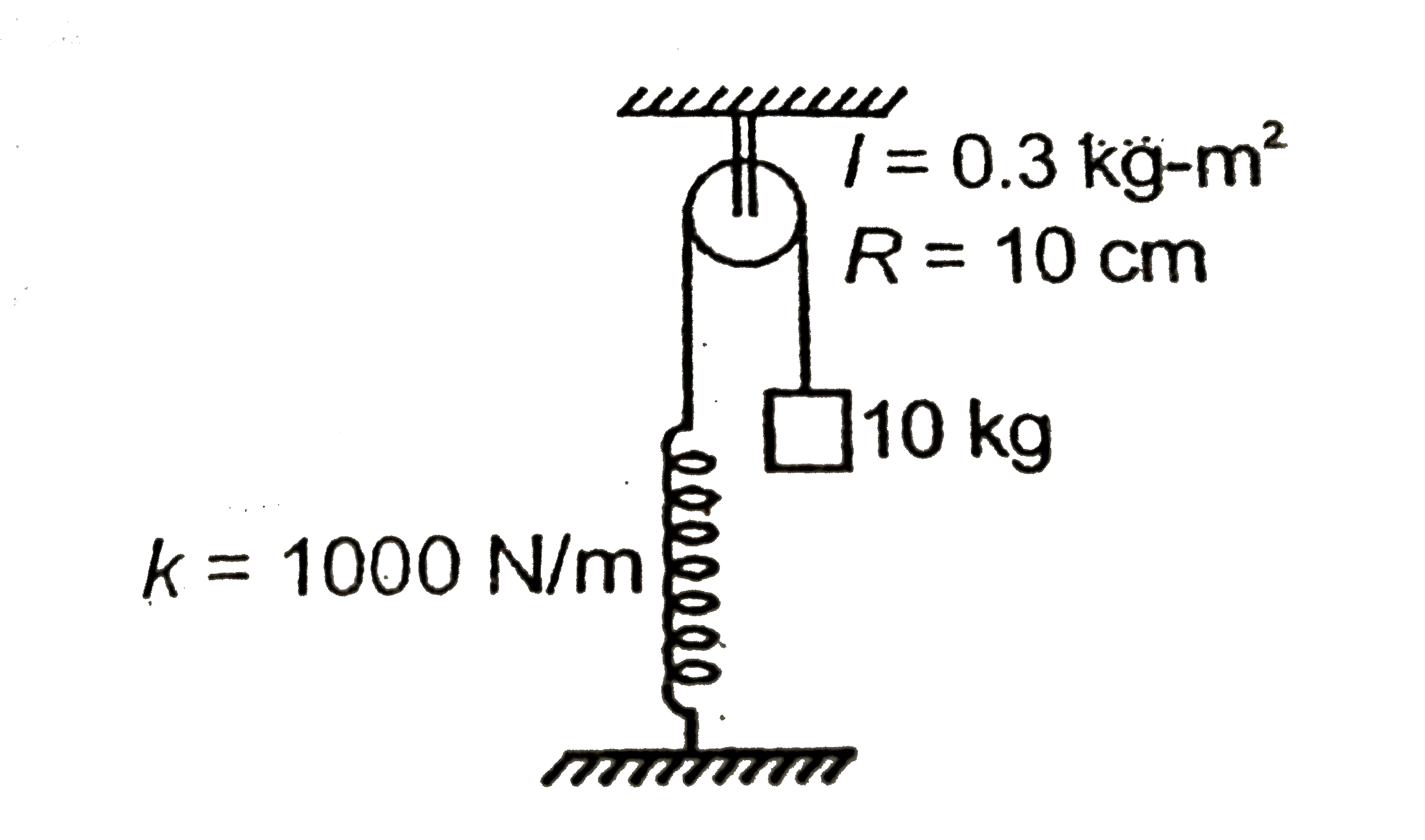In the fission of U235
(i) Slow neutron is absorbed by U235
(ii) The products in the process are not same always, their atomic number varies from 34 to 58
(iii) About 200 Mev energy is released per fission
(iv) The product are always Ba and Kr
Only i, ii & iii are true
Only ii & iii are true
All are true
Only i, ii & iv are true
The correct Answer is:A
To solve the question regarding the fission of Uranium-235 (U-235), we will analyze each statement provided in the question step by step.
Step 1: Analyze Statement (i)
Statement: Slow neutron is absorbed by U-235.
Analysis:
In nuclear fission, a slow (thermal) neutron is indeed absorbed by U-235. This absorption leads to the formation of an unstable compound nucleus, which eventually undergoes fission. Therefore, this statement is true.
Step 2: Analyze Statement (ii)
Statement: The products in the process are not always the same; their atomic number varies from 34 to 58.
Analysis:
When U-235 undergoes fission, it can produce various fission products. While barium (Ba) and krypton (Kr) are common products, other isotopes can also be formed, leading to a range of atomic numbers. The atomic numbers of the fission products can indeed vary and typically fall within the range of 34 to 58. Thus, this statement is also true.
Step 3: Analyze Statement (iii)
Statement: About 200 MeV energy is released per fission.
Analysis:
The fission of U-235 releases a significant amount of energy, approximately 200 MeV (mega-electron volts) per fission event. This energy release is one of the key aspects of nuclear fission and is well-documented in nuclear physics. Therefore, this statement is true.
Step 4: Analyze Statement (iv)
Statement: The products are always Ba and Kr.
Analysis:
While barium and krypton are common fission products of U-235 fission, it is not accurate to say that they are the only products. Other isotopes can also be produced, and thus, the statement that the products are "always" Ba and Kr is false.
Conclusion
Based on the analysis:
- Statement (i) is true.
- Statement (ii) is true.
- Statement (iii) is true.
- Statement (iv) is false.
Thus, the correct option is that only statements 1, 2, and 3 are true.
Final Answer
The correct option is: Only 1, 2, and 3 are true.
---
Statement: Slow neutron is absorbed by U-235.
In nuclear fission, a slow (thermal) neutron is indeed absorbed by U-235. This absorption leads to the formation of an unstable compound nucleus, which eventually undergoes fission. Therefore, this statement is true.
Statement: The products in the process are not always the same; their atomic number varies from 34 to 58.
When U-235 undergoes fission, it can produce various fission products. While barium (Ba) and krypton (Kr) are common products, other isotopes can also be formed, leading to a range of atomic numbers. The atomic numbers of the fission products can indeed vary and typically fall within the range of 34 to 58. Thus, this statement is also true.
Statement: About 200 MeV energy is released per fission.
The fission of U-235 releases a significant amount of energy, approximately 200 MeV (mega-electron volts) per fission event. This energy release is one of the key aspects of nuclear fission and is well-documented in nuclear physics. Therefore, this statement is true.
Statement: The products are always Ba and Kr.
While barium and krypton are common fission products of U-235 fission, it is not accurate to say that they are the only products. Other isotopes can also be produced, and thus, the statement that the products are "always" Ba and Kr is false.
Based on the analysis:
- Statement (i) is true.
- Statement (ii) is true.
- Statement (iii) is true.
- Statement (iv) is false.
The correct option is: Only 1, 2, and 3 are true.
Topper's Solved these Questions
- NUCLEIBOOK - AAKASH SERIESCHAPTER - NUCLEIEXERCISE - Exercise-II
40 Videos
- NUCLEIBOOK - AAKASH SERIESCHAPTER - NUCLEIEXERCISE - Practice Exercise
40 Videos
- NUCLEIBOOK - AAKASH SERIESCHAPTER - NUCLEIEXERCISE - Practice Exercise
40 Videos
- NUCLEAR PHYSICSBOOK - AAKASH SERIESCHAPTER - NUCLEAR PHYSICSEXERCISE - ADDITIONAL PRACTICE PRACTICE SHEET (ADVANCED) Integer Type Questions
3 Videos
- OPTICAL INSTRUMENTS BOOK - AAKASH SERIESCHAPTER - OPTICAL INSTRUMENTS EXERCISE - PRACTICE SHEET (EXERCISE -I) (OPTICAL INSTRUMENTS) (LEVEL-I (MAIN)) (SUBJECTIVE OBJECTIVE TYPE QUESTIONS)
21 Videos
Similar Questions
The products of combustion of an aliphatic thiol (RSH) at 298K are
View SolutionWhat is the energy released by fassion of 1 g of U235? (Assume 200 Me V energy is liberated on fission of 1 nucleus)
View SolutionIn each fission of U235, 200 MeV of energy is released. If a reactor produces 100MW power the rate of fission in it will be
View SolutionCalculate the energy released by fission from 2 gm of .92U235 in KWH. Given that the energy released per fission is 200 Mev.
View SolutionCalculate the energy released by fission from 2 g of .23592U in k Wh. Given that the energy released per fission is 200 Mev.
View SolutionA nuclear reactor containing U235 produces 10 MW . Calculate the fission rate assuming that 200 MeV of useful energy is released in one fission ?
View SolutionTo generate a power of 3.2 mega watt, the number of fissions of U235 per minute is.
(Energy released per fission =200MeV,1eV=1.6×10−19J).
View SolutionIn the given arrangement the block is released from the position where the spring is unstretched. The speed of the block when it has descended through 2cm is x10. Find the value of x.

View SolutionWhen U235 is bombarded with one neutron, the fission occurs and the products are three neutrons, ,36Kr94 and.
View SolutionA reactor is generating 1000 kW of power and 200 MeV of energy may be obtained per fission of U235 The rate of nuclear fission in the reactor is
View Solution
